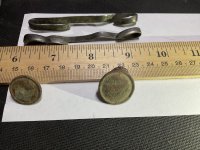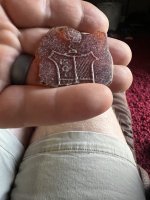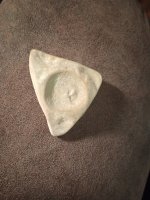WHADIFIND
Gold Member
Found this yesterday. The front isn't much help.

But, in person, on the back,



You can make out "GEORGE COGGILL" and part of the word "EXTRA". The top looks like a fleur-de-lis.
Buttons are not my forté.
All comments are welcome!
But, in person, on the back,
You can make out "GEORGE COGGILL" and part of the word "EXTRA". The top looks like a fleur-de-lis.
Buttons are not my forté.
All comments are welcome!






